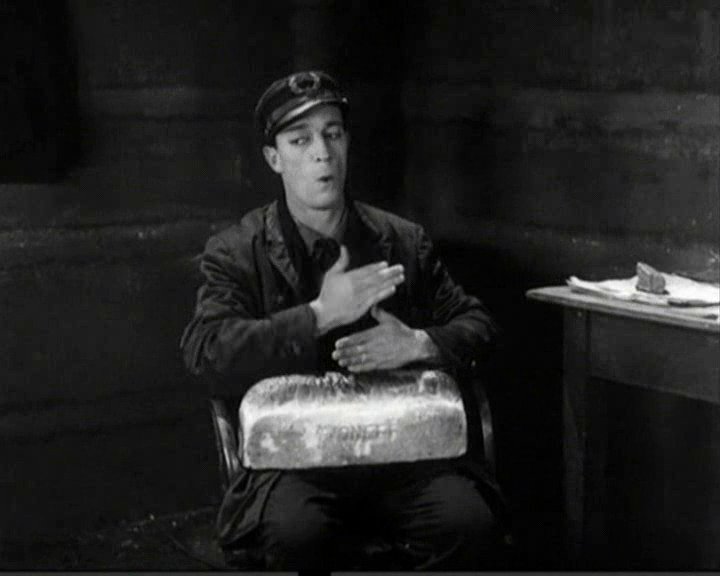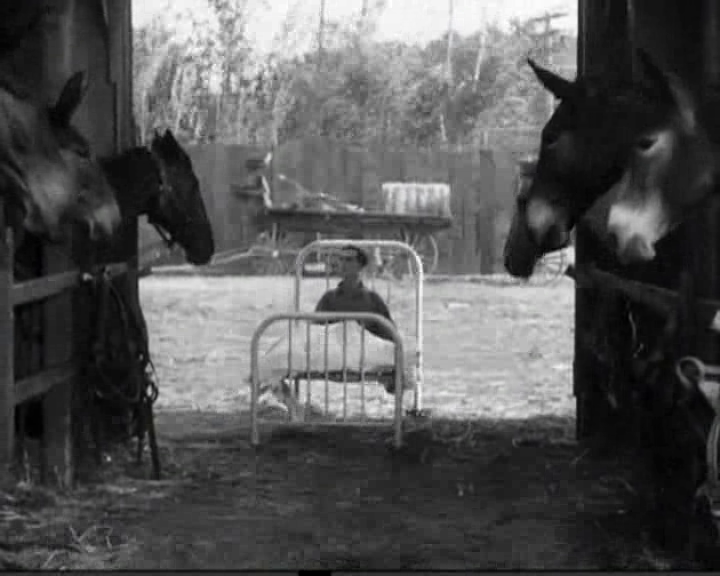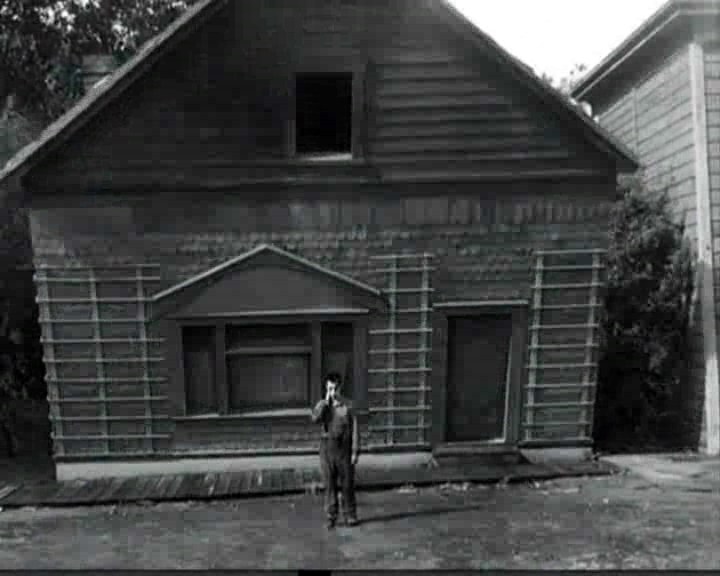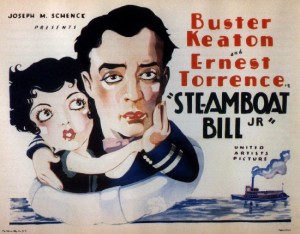|
Genres, Themes, Actors, and Directors:
- Buster Keaton Films
- Comedy
- Father and Child
- Rivalry
- Silent Films
- Star-Crossed Lovers
Review:
Buster Keaton’s final film for United Artists is widely considered one of his best — in large part because of its truly stunning climax, in which a cyclone rips through town, affording not only Keaton’s character but Keaton himself multiple opportunities to narrowly escape death as buildings literally collapse just inches around him; as noted in Chris Dashiell’s CineScene Review, the entire cyclone sequence is “perhaps the high point of Keaton’s career as a designer of amazing stunts and visual effects.” However, I’ll admit that I don’t personally find this film to be one of Keaton’s most consistently amusing outings. Other than a clever early sequence in which Keaton’s disappointed father attempts to buy him a new, “manlier” hat, the film’s comedic energy (for me, at any rate) doesn’t really kick into gear until about halfway through, once Keaton is finally allowed to show his mettle by attempting to sneak his wrongly imprisoned father out of jail. From thence, he’s the typically inventive and daring Keaton we know and adore, battling storms, rescuing his loved ones from harm’s way, and performing death-defying physical stunts.
My favorite line (as a handful of smuggled tools fall out of a loaf of bread Keaton is trying to hand over to his father in jail):
“That must have happened when the dough fell in the tool chest.”
Note: In his Alternate Oscars, despite conceding that SBJ “isn’t a pivotal Keaton film”, Peary nonetheless names Keaton Best Actor of the Year for his performance here, noting that “one can see why many consider him the most lovable of the silent stars and every bit as sexy as the silent screen’s romantic athlete, Douglas Fairbanks”. Amen to that!
Redeeming Qualities and Moments:
- Keaton’s attempt to sneak his father out of jail

- The stunning cyclone sequence


Must See?
Yes, for its breathtaking technical bravado. Listed as a film with Historical Importance and a Personal Recommendation in the back of Peary’s book. Available for free viewing on www.archive.org.
(Listed in 1001 Movies You Must See Before You Die)
Links:
|




One thought on “Steamboat Bill, Jr. (1928)”
Not a must.
I had a somewhat different take on this (on a first viewing). The assessment concurs that this is not “consistently amusing” work. And I go somewhat further than that.
Keaton, oddly, is something of an incidental in his own film. Aside from ‘the hat-choosing scene’ (which, for me, is the film’s high point), Keaton is mostly called on to fall down a lot (not the bread and butter of his talent).
There are other disappointments, but mainly: The two fathers are simply ogres. Yes, they’re supposed to be ogres – but they serve little comedic purpose. That seems a miscalculation. Early on, it appears that Byron will be one of Keaton’s better leading ladies (she exhibits a certain feisty quality). But, sadly, her part is whittled away to almost nothing. Much of Keaton’s best work in other films is the result of economy – the bits are shorter and they tend to follow in quick succession for a cumulative effect. Here we get (for example) something like ‘the bread scene’ – which, although mildly amusing, seems to go on too long. Then comes the conclusion, in which the wind seems to become the star of the show as it causes all kinds of destruction.
I guess I’m flying in the face of the amount of praise generally given to ‘SBJ’. I kept wanting more of what Keaton does best – and I kept wanting it front and center.